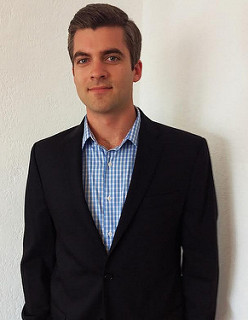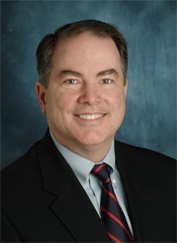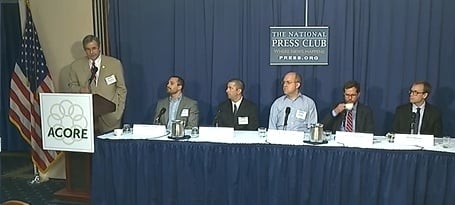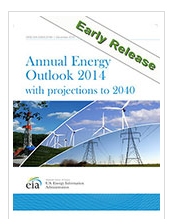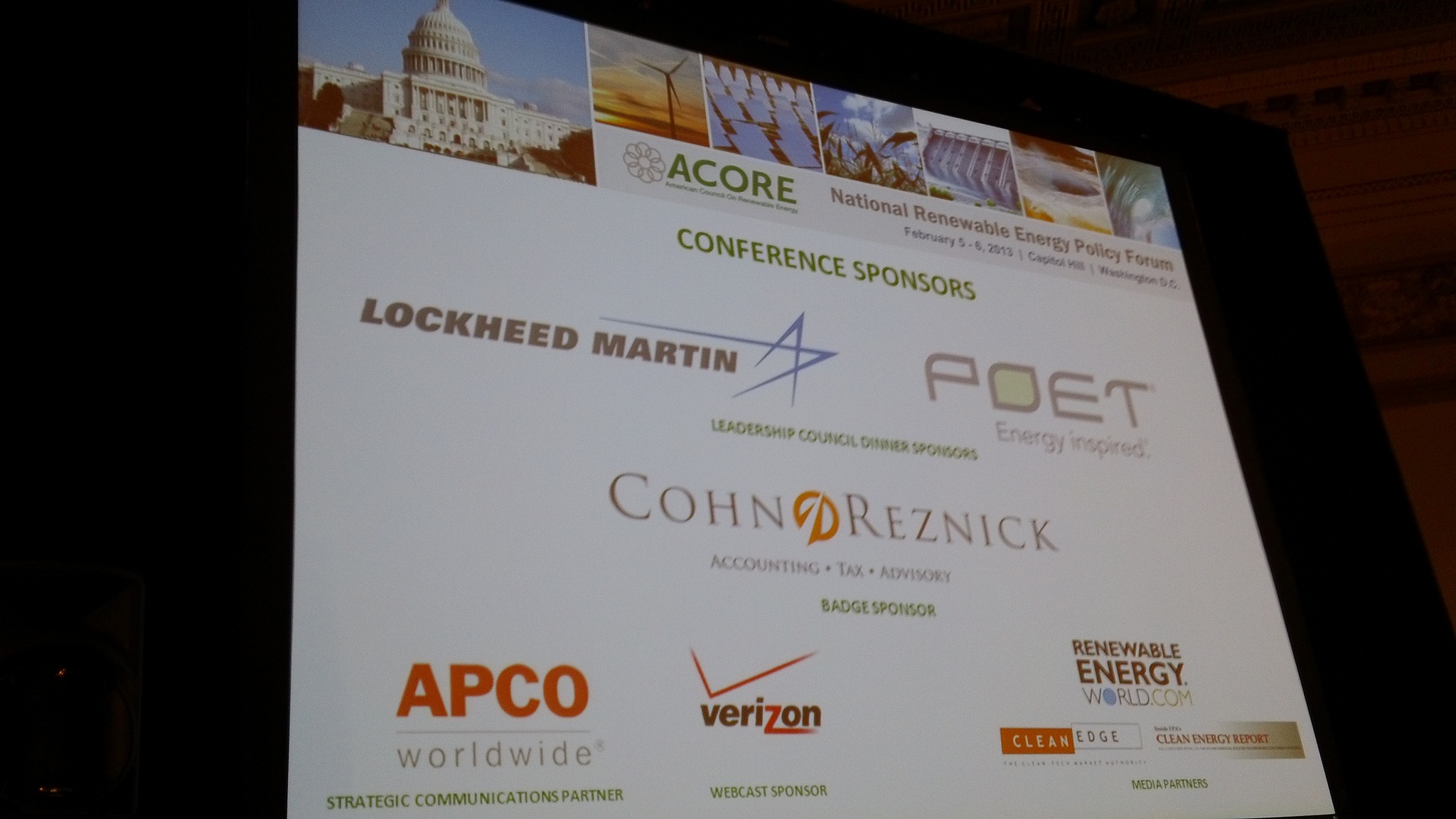Insights
A big development in clean energy advocacy recently took place, and odds are you haven't heard about it.
Continue ReadingThis article isn't directly cleantech related, but it does apply to those working in cleantech - or any other industry for that matter. Specifically, it highlights the importance of segregating electronic interruptions and social media, and of taking work-free, electronics-free vacations.
Continue ReadingDavid Briggs has long-standing experience in the solar industry, including three years at a cleantech communications firm and three years as Marketing Manager at microinverter manufacturer Enphase Energy. Briggs now works as Director of Marketing at mounting systems provider IronRidge. Recently, Briggs took a few minutes from his busy schedule to talk to us about an important topic for the solar industry: how best to engage and market to your customer base, and ultimately to "truly out-compete traditional energy." We greatly appreciate Briggs' insight-filled responses to our questions.
Continue ReadingBy Tom Matzzie
Continue ReadingBy Mark Sokolove, Executive Vice President of Tigercomm
Continue ReadingThis past September, Tigercomm President Mike Casey interviewed former “super lobbyist” Jack Abramoff. Whatever else you think about him, the fact is that Abramoff knew the business of Capitol Hill influence peddling inside-out. What Abramoff said to Casey was that the fossil fuel industry is deadly serious about this game, and that the clean energy industry needs to fully understand that. Case in point? A new analysis on The Great Energy Challenge blog by Bill Chameides, Dean of Duke's Nicholas School of the Environment. The key takeaways?
Continue ReadingOn April 11, the American Council on Renewable Energy (ACORE) held a fascinating media roundtable at the National Press Club in Washington, DC. ACORE President Michael Brower set the tone for the panels with his introductory remarks, in which he stressed that "renewable energy resources have historically held the goodwill of the majority of the American public," but that media coverage doesn't necessarily reflect that - or "align with the reality of the marketplace." As Brower explained, the media has over-reported the relatively infrequent cleantech failures, while under-reporting its overwhelming successes. And, Brower added, many of those successes are happening in the states, where from "Maine to Georgia, to Kansas to Oregon and all those states in between," we see "a new emergence of bipartisan-ism on clean and renewable energy."
Continue ReadingKatie Fehrenbacher "launched GigaOM’s greentech channel in 2007 and closely tracks energy entrepreneurs and investors," so she's definitely got her finger on the pulse of the industry, particularly in Silicon Valley. Which is why her take-down of the meme that "Silicon Valley doesn’t seem to be creating anything meaningful anymore" is worth highlighting. Fehrenbacher makes a few key points.
Continue ReadingEIA Renewable Energy Forecast Isn't Just Wrong, It's Wildly, Laughably Too Low
I hate to criticize the federal agency I worked at for 17+ years, especially since the Energy Information Administration (EIA) does great work in many areas (e.g., data collection, energy market and oil supply disruption analysis). But when it comes to long-term energy forecasting (whether we're talking prices, production, consumption, imports, whatever), I'm sorry to say, EIA has been not just wrong, time and time again, but laughably, outrageously wrong. And, sadly, their latest Annual Energy Outlook (the AEO - with "forecasts," using the word VERY loosely, out to 2040) continues that abysmal tradition. More on the AEO shortly. But first, let's review EIA's track record on long-term forecasting, from a recent article by Old Dominion University Professor Steve Yetiv and me in the Journal of Energy Security.
*Looking at EIA's 2005 AEO (note: this is somewhat random, but you'd find the same problems in pretty much ANY year's AEO), EIA forecast 2013 oil prices would be around $25-$30 per barrel, with gasoline prices of around $1.50/gallon. The actual prices? More like $100 per barrel for oil and $3.50/gallon for gasoline in the US market. That's off by a factor of 3-4 fold. Yikes!
*Back in 2005, EIA forecast US crude oil production would reach about 5.7 million barrels per day (bbl/d) in 2013, with Lower-US-48 production declining steadily after 2009. Actual US production so far in 2013? How about 7.3 million barrels per day (bbl/d) and rising fast? That's wildly off, both directionally and in absolute terms (by 1.6 million bbl/d).
*Likewise, the 2005 EIA forecast for US natural gas production in 2013 was wildly off -- about 20.6 trillion cubic feet (Tcf), compared to actual production of 24.2 Tcf. Not even close.
*EIA was also wildly off on U.S. gross oil imports, forecasting that they would rise sharply, from 12.3 million bbl/d in 2003 to 20.2 million bbl/d in 2025. What's actually happened so far is that US gross oil imports have fallen sharply, from 12.3 million bpd in 2003 to just 9.7 million bpd in 2013. US net oil imports have fallen even more sharply, from 11.2 million bpd in 2003 to 6.7 million bpd in 2013. EIA predicted the exact opposite.
*EIA's 2005 long-term forecast also missed the future price of natural gas in the US by a huge margin: a forecast price for 2012 of $3.80/thousand cubic feet (mcf) compared to the actual price of $10.66/mcf. That's not even close; heck, it's not even close to being close!
*In 2005, EIA forecast that U.S. solar power capacity would hit about 1.2 GW in 2013. Where are we right now? According to Greentech Media, the U.S. is closing in (if it already hasn't passed) the 10 GW mark in solar PV capacity right about now, and that's not even counting solar thermal power generating capacity (according to this article, you can add another 1 GW or so of U.S. solar thermal power capacity). In sum, EIA forecast 1.2 GW of U.S. solar power capacity in 2013; the actual figure is around 11 GW - nearly 10 times higher than EIA forecast!
*In 2005, EIA forecast that U.S. wind power capacity would reach about 9 gigawatts (GW) in 2013. Where, in fact, are we right now? According to theAmerican Wind Energy Association (AWEA), installed U.S. wind power capacity at the end of 2012 was 60 GW. Quick math: EIA's forecast of 9 GW compared to an actual 60 GW? That's off by a factor of nearly 7!
We could go on and on with this, but you get the picture: EIA has basically ZERO ability to forecast long-term energy trends even close to correctly.Let me emphasize: it's not that EIA is off by a just a bit; they're off by orders of magnitude. In that context, let's look at their latest long-term "forecasts" for renewable energy.
Continue ReadingThe smart grid...is just an incredible opportunity
Continue ReadingOn September 16th, I was excited to bring our "Scaling Green on the Scene" interview series to the CleanTech OC 2013 Conference and Expo in Irvine, California. This conference is the "only annual conference in Orange County dedicated to covering the clean technology space and connecting industry stakeholders from throughout the region and state.” In the first installment, we wrote about my interview with former EPA chief Stephen Johnson, in which Johnson talks about the "upcoming, beneficial explosion of cleantech."
Continue ReadingVideo: Tom Steyer Discusses Anti-Keystone Tar Sands Pipeline Campaign with CBC
Here are a few key points by Tom Steyer made in this interview by the CBC:
Earlier today, your intrepid Scaling Green correspondent attended the Northern Virginia Technology Council (NVTC) forum in Reston, featuring Virginia gubernatorial candidates Terry McAuliffe and Ken Cuccinelli. The purpose of the forum was to "provide technology business leaders the opportunity to learn about the candidates' views related to technology and business policy." Given the importance of cleantech, we fully expected that this topic would be discussed. Instead, in about three hours, the participants and the audience essentially didn't touch on energy issues at all, let alone on cleantech - one of the fastest growing industries in the country, and one with enormous potential for Virginia.
Continue ReadingCourtesy of its email newsletter, here's some potentially promising news from Cleantech Group's I3, "the sector's leading market intelligence product providing insight into innovation."
Continue Reading
Former Michigan Gov. Jennifer Granholm kicks off the TED2013 conference with "a very American question with worldwide implications: How do we make more jobs?" The answer: by "empowering states to create jobs through a Clean Energy Jobs Race to the Top."
In this video from the ACORE policy forum held in Washington, DC last Wednesday (see here for a summary of the event), Ethan Zindler, Head of Policy Analysis at Bloomberg New Energy Finance; and Nancy Pfund, Managing Partner at DBL Investors provided "The Facts, the Real Facts, and Nothing but the Facts!" on clean energy. What are those "real facts?" As ACORE puts it:
In this video from the ACORE policy forum held in Washington, DC last Wednesday (see here for a summary of the event), ACORE President Dennis McGinn (USN-Retired) summed up the day's proceedings. These were McGinn's main conclusions:
In this video from the ACORE policy forum held in Washington, DC last Wednesday (see here for a summary of the event), Interior Secretary Ken Salazar stresses the importance of pushing ahead aggressively on clean energy, so that we’re not hostage to foreign oil or the realities of climate change. Salazar points to the enormous potential of both onshore and offshore renewable energy in the United States, as well as great progress made the past four years, and stressed the need to upgrade our country’s transmission grid, because it’s “stranded energy” unless we can get that wind and solar power from where it’s produced to where it’s demanded. Salazar stressed the importance for the clean energy industry of turning “skeptics” into “believers” by showing the success of actual projects “on the ground.” Finally, Salazar argues that a stable policy environment is crucial to realizing clean energy’s full potential as rapidly as possible.
I had the pleasure yesterday of attending the National Renewable Energy Forum, sponsored by the American Council On Renewable Energy (ACORE), in the Cannon House Office Building in Washington, DC. I "live tweeted" the event at the Scaling Green Twitter feed, and also recommend that you take a look at the Twitter feeds of Greentechmedia reporter Stephen Lacey, Clean Tech Nation author Clint Wilder, and ACORE Vice President Tom Weirich. Finally, I recommend Stephen Lacey's report on how conservative Congressman Steve King strongly supports federal assistance to renewable energy.
Continue Readingby Brian Willis
Continue ReadingAt a time when energy and environmental issues are more important than ever, stories like this are truly pitiful.
Continue Reading
At the "Energy All-Stars" event held this past Saturday at U.S. Department of Energy headquarters in Washington, DC, Energy Secretary Steven Chu talked about the challenges and opportunities relating to energy issues in coming years. I live tweeted the event; here are the tweets on Secretary Chu's talk. Also note the shout-out to Tigercomm President Mike Casey by Undersecretary David Sandalow for helping pull the event together.
Michael Liebreich, CEO of Bloomberg New Energy Finance, talks about the promise of the clean energy economy during the "Energy All-Stars" event held at U.S. Department of Energy headquarters in Washington, DC this past Saturday. I live tweeted the event; here are my tweets from Liebreich's superb TED-style presentation.
by Brian Willis
Continue Reading
Recently, we held a roundtable discussion at Tigercomm headquarters in Rosslyn, Virginia with former Virginia Governor (now Senator-elect) Tim Kaine, as well as 10 clean economy business leaders from the mid-Atlantic region. One of those leaders was Anthony Smith of Secure Futures. Here's a brief description of Secure Future's work in helping to build a clean energy economy.
Everyone in the solar industry, as well as everyone who supports solar power, should read the superb, recent piece by Michael Grunwald of Time Magazine -- "(Almost) Everyone Loves Solar." Here are the key points:
Continue Reading
It’s hard to argue with the idea that energy efficiency is the most under-told part of America’s clean energy economy, despite the efforts to date of some pretty smart, committed people. We could go such a long way to cutting our use of the most destructive forms of energy and addressing global climate disruption if we just stopped wasting so much.
Continue Reading
We just wanted to point out a great article by Katrina vanden Heuvel of The Nation called "Solyndra and the Republican Outrage Machine." Here's an excerpt, bolding added for emphasis:
Continue ReadingAs we all know, this is an important election year - for president and control of Congress - in the United States, one with the potential to create significant changes in federal government policy towards clean energy starting in early 2013. Along those lines, the following article at AOL Energy caught our eye:
Continue ReadingThe following interview is with Belen Gallego, Founder & Director at CSP Today and PV Insider. Ms. Gallego is also in charge of CSP Today's range of conferences and trade shows, including the upcoming CSP Today 6th Concentrated Solar Thermal Power USA Conference, being held in Las Vegas beginning on June 27-28. For a helpful discussion of CSP, see the National Renewable Energy Laboratory's page on this topic. Also, thanks very much to Belen Gallego for taking time out of preparing for the upcoming conference to provide thorough, detailed responses to our questions!
Scaling Green Question #1: What do you see as the main opportunities and challenges – economic, political, technological, etc. - facing solar power generally, and Concentrated Solar Power (CSP) specifically, in the United States?
Belen Gallego: In order for the CSP industry to further develop, we need to look at resolving a few challenges for sure. Economic challenges aren't a rare occurrence at the moment, unfortunately. In fact, they affect most industries, as they are to a very large extent due to the world financial and economic situation. CSP is a proven, bankable technology, and in normal circumstances it would be possible to finance even large-scale projects.
The biggest technological challenge that we have right now is reducing costs. This is already well under way, as costs have dropped significantly over the past 6 years of plants in operation, although more remains to be done. We need to remember that the rate of cost reduction in CSP is very respectable compared to many other industries. If I remember correctly, 6 years ago we were talking about $4.50 per installed watt for PV and now we are at less than $1.00 per installed watt. This leapfrog type of development does happen, but it needs time and critical mass. Keep in mind that the PV industry had a history of 20+ years before CSP!
The political challenge, which is also a NIMBY challenge, that we face is communication. Renewable energy appeals to the end consumer, as well as to governments, and that appeal makes sense, because to avoid climate change and an uncertain energy outlook, we must develop the right technologies. However, as a niche industry, I believe that CSP isn't doing all we can to communicate the immense value that CSP has for grid stability, for example. It is by communicating the inherent value added of CSP that the technology's full potential and key role to play will be understood.
In the end, I feel that often the greatest challenge is to be patient. Infrastructure projects of this size and complexity take years to come to completion, and for the market to gain gravitas takes much longer. We have come a long way already, and sometimes we forget that the time scales involved makes it difficult as a speculative market. CSP development may be slower, but it is organic and sustainable. You just can't compare the CSP industry with the dotcom boom; it doesn’t work like that.
Scaling Green Question #2: According to a recent article at CSP Today, “Growth in the Concentrated Solar Power (CSP) sector faltered last year as photovoltaic (PV) module prices dropped,” but in the long run “CSP’s ability to incorporate thermal storage and to supplement conventional power generation offers benefits beyond the value of the kilowatt-hours they generate.” How do you see this situation evolving in coming years, and specifically do you believe that CSP will gain on PV in terms of cost competitiveness in the near term?
Belen Gallego: When people ask me this question, I like to compare the Spanish and U.S. markets because I feel that the Spain is a small case study of what will happen in a bigger market like the United States. In Spain, we have a very well-managed national grid, which is relatively modern. We built in 2008-2009 over 4GW of PV, as well as over 21GW of wind capacity as of 2012. The renewable energy electricity production share hovers around 20%. However, what is not widely known is that at certain times of the year, sometimes in the right conditions the share of energy produced from renewables can reach as high as 50%. That amount of peak power is difficult for the grid to integrate, to the extent that plants sometimes need to be disconnected, meaning that the energy is lost because the grid can´t absorb it. It is only a matter of time until the United States has this kind of peak power integration problem, and CSP with storage can really help manage this issue.
Continue Reading
A few weeks ago, my Tigercomm colleague Mark Sokolove and I were able to take Scaling Green’s Communicating Energy lecture series on the road to the Solar Power International 2011 (SPI) conference and trade show in Dallas, Texas. While there, we spoke with several leaders in the solar and cleantech industries. You can read about and view the interviews on The Solar Foundation’s (TSF) National Solar Jobs Census 2011 – a census showing record jobs growth in the industry - on Scaling Green. Today, we turn our focus to the wildly inflated Solyndra story.
Continue ReadingCross posted from the Great Energy Challenge blog.
Continue ReadingPrior to the eruption of the Solyndra story, we had the opportunity to have Stephen Lacey of ClimateProgress as a Scaling Green “Communicating Energy” lecture series guest. He became well known in cleantech circles during his years as editor and producer at Renewable Energy World, where he won a 2010 Neal Award for his Inside Renewable Energy podcast. Since then, Lacey’s risen to wider national recognition as an influential energy and environmental writer at ClimateProgress, run by climate policy blogging giant Joe Romm.
Summer vacations and the Solyndra swirl had me wait an embarrassingly long time before posting the highlights of Stephen’s visit with us. His points back then? That clean energy policy will be “a long slog;” that energy policy circles largely ignore government welfare to dirty energy while exaggerating the relatively miniscule policy support provided to clean energy; and that Washington generally doesn’t “get” cleantech. The post-Solyndra salience of his pre-Solyndra remarks show the quality of Stephen’s periscope.
His thoughts on where clean energy is heading:
Generally, the trends within the business community are pretty positive, and moving from reporting on the business of clean energy and coming down to DC to be closer to the political environment, I’ve been struck how difficult things are here…we reached the 1-year mark last Friday of when Congress and the President dropped a comprehensive climate and clean energy bill. And one year on, we have no movement on a clean energy standard, we have the loan guarantee program running out of funds. …and our biggest political fights are over the efficiency of light bulbs and whether or not we should have Styrofoam in the congressional cafeterias.
Lacey also noted, in a discussion preceding this lecture, that, although “cleantech is hot in lots of parts of the country…people in DC don’t get it. The national policy discussion is very backwards,” a combination of “institutional inertia and the influence of polluting industry lobbyists.” As a result of these forces holding back clean energy, Lacey concluded, the policy discussion in Washington, DC is “going to be a long slog.”
Continue ReadingOver at Grist, David Roberts does a great job explaining the flaws in media coverage generally, and Politico's coverage specifically, of the Solyndra non-scandal. Here's an excerpt:
Continue ReadingSad news; an outstanding leader in corporate sustainability has passed away.
Continue ReadingCross posted from the Great Energy Challenge blog
What wasn’t to dislike about the spectacle of this summer’s recently concluded budget battle? There was the impending economic disaster, the Full Monty on just how dysfunctional Congress has gotten, and the outsized role given by those operating on the political fringe.
But for clean energy advocates, there was another reason to throw the remote at the TV: Pro-clean energy elected officials missed the opportunity to cut government handouts to fossil energy companies.
I’m no budget expert, but when we need to cut a lot of spending, shouldn’t we cut the really big stuff that people dislike anyway? Nothing qualifies for that category like the combined welfare check we cut each year to the oil, coal and gas industries: $52 billion a year according to the most comprehensive count to date. For those in elected office trying to scale the clean economy, shouldn’t kicking these highly profitable, mature industries off the dole have been a policy and political no-brainer?
The answer given by Democratic pollster Mike Bocian is an unqualified “yes.” (See video above.) Bocian, now with GBA Strategies, spoke at our Communicating Energy lecture series before the budget standoff hit its climax. His message was the same I heard echoed roughly a week later by top Republican pollster Neil Newhouse: Cutting government handouts to big oil companies is a political winner with practically no electoral downside.
By similarly large majorities of over 70 percent, Americans want to cut the massive government welfare check fossil energy, and they want the relatively inexpensive federal policy support for clean energy left alone. Plenty of Republicans around the country want this waste ended, and we ought to have the two political parties racing to see who can cut the most from the handouts to fossil energy.
But the plans offered by Congressional Republicans – the “Ryan Plan,” named for author Rep. Paul Ryan (WI); or the “Cut, Cap and Balance” plan from Speaker Boehner –would have done exactly the opposite. For President Obama and other clean energy advocates, this gap created an opportunity to put small government advocates in the position of defending large, unpopular forms of government waste.
However, whether you’re marketing products or policies, busy Americans want things bottom-lined. You just can’t win their attention without message discipline, simplicity, repetition, and the plain language that connects to where their attitudes are.
To win the budget fight in the court of public opinion, each side –President Obama and his staff on one side, and Speaker Boehner and his caucus on the other – should have been trying to boil this messy situation down to a bottom line, anchored by key phrase.
Continue Reading
"Clean-Energy Technologies aren't 'Cute,' but Critical to our Energy Future"
Courtesy of Trevor Winnie, Clean Edge's senior research analyst, comes a strong rebuttal to Bill Gates' comment that currently available cleantech technologies were "cute," but won't be sufficient to solve the planet's energy challenges. To the contrary, Trevor Winnie argues:
Continue Reading
